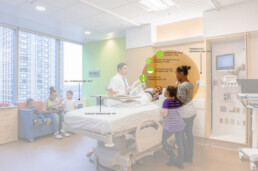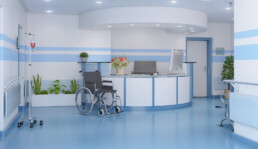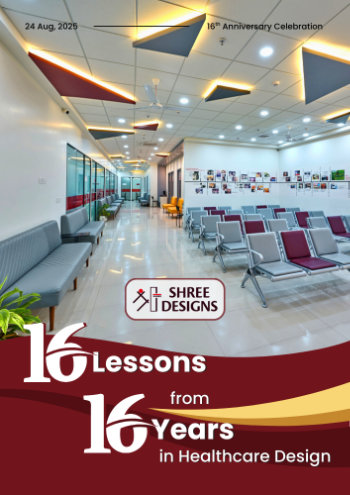Building Health, Block by Block: The Rise of Community Diagnostic Centres
Diagnostics at the Frontline of Care
In India’s evolving healthcare landscape, the burden of disease is shifting. From infectious illnesses to chronic, non-communicable diseases (NCDs), the need for early detection has never been greater. Yet, access to diagnostic services remains uneven, especially in rural and semi-urban areas.
Community Diagnostic Centres (CDCs) are emerging as a powerful bridge between underserved populations and essential healthcare. Positioned within communities, these centres offer basic lab investigations, imaging, and consultation support without the delays, travel burdens, or overcrowding of tertiary hospitals.
But for CDCs to succeed, they must be designed right. Not retrofitted, not makeshift. Purpose-built diagnostic centres are a distinct category in healthcare architecture, requiring careful thought on spatial zoning, material use, infection control, and user experience.
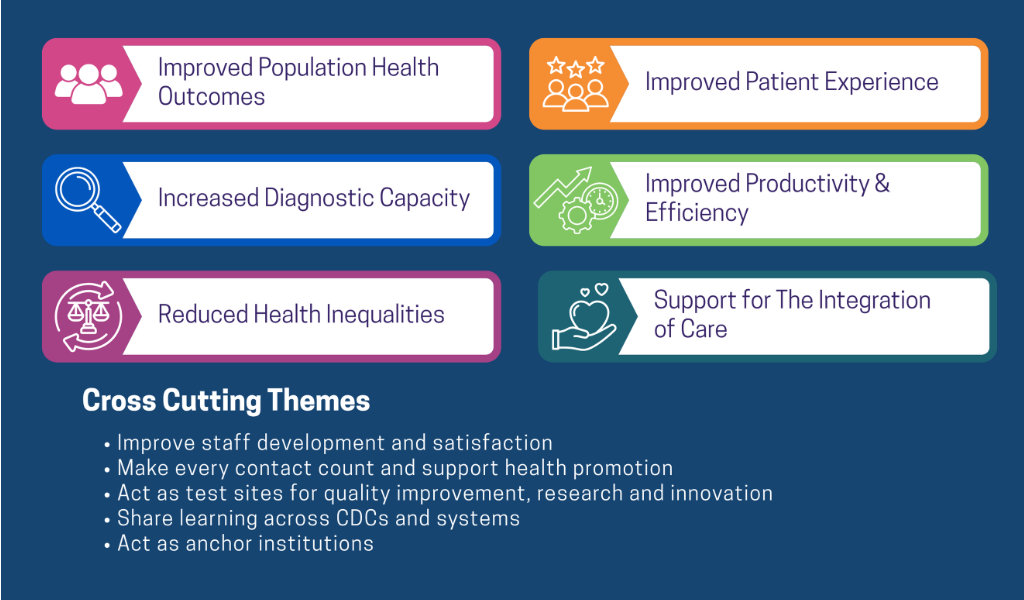
Why Now: Policy and Population Drivers
According to the Ministry of Health and Family Welfare, India aims to strengthen rural and local healthcare infrastructure, under the PM-ABHIM initiative (Pradhan Mantri – Ayushman Bharat Health Infrastructure Mission), prioritising early diagnostics for common NCDs, maternal health, infectious diseases, and more
- 70% of healthcare expenses in India are out-of-pocket, with diagnostics contributing significantly.
- Urban poor and rural populations still rely on private labs or overcrowded district hospitals for basic tests, both logistically and financially unsustainable.
Designing for Impact: What a CDC Must Enable
1. Streamlined Patient Flow
CDC designs must allow for:
- Intuitive patient circulation: Entry to registration → sample collection → imaging →pharmacy/report handout.
- Separate zones for potentially infectious patients, especially during outbreaks (e.g., fever clinics).
- Minimal wait times: Through strategically placed waiting zones with digital queue systems or visual cues.
Modular layouts with L-shaped corridors or radial layouts around a central workcore allow for both visibility and patient segregation.

“Designing a CDC is a balancing act. You’re working with tight spaces, lean budgets—and yet, the expectations are high. Every square foot must serve both function and dignity,”
Kshititi Nagarkar, Shree Designs
2. Zoning for Safety and Hygiene
Each CDC must follow NABH and biomedical waste management guidelines:
- Wet vs. dry zoning: Sample collection, toilets, and disposal areas must be separated from admin and reception zones.
- Biohazard management: Clearly marked waste collection zones with washable, seamless wall finishes.
- Controlled ventilation: Negative pressure rooms for TB testing; exhausts for chemical handling.
Suggested Materials:
- Anti-microbial wall claddings (e.g., PVC laminates or epoxy coatings) in sample collection areas.
- Non-porous, stain-resistant countertops (e.g., solid surface materials like Corian).
- High-traffic vinyl or vitrified tiles with coved skirting for easy cleaning.
3. Access for All: Universal Design
A CDC must feel approachable to a 70-year-old patient, a child, and a wheelchair user alike.
- Ramps with handrails and anti-slip surfacing
- Reception counters at seated and standing height
- Clearly visible signage in local languages
- Natural daylighting to reduce anxiety
4. Digital Integration and Future Readiness
- Provision for Telemedicine Pods: Sound-insulated cubicles for remote consultations.
- Smart kiosks for check-in and reporting
- Sample barcoding zones and mini-lab automation space
Frosted glass partitions with graphic overlays and modular furniture in digital pods allow adaptability as CDCs expand or evolve.
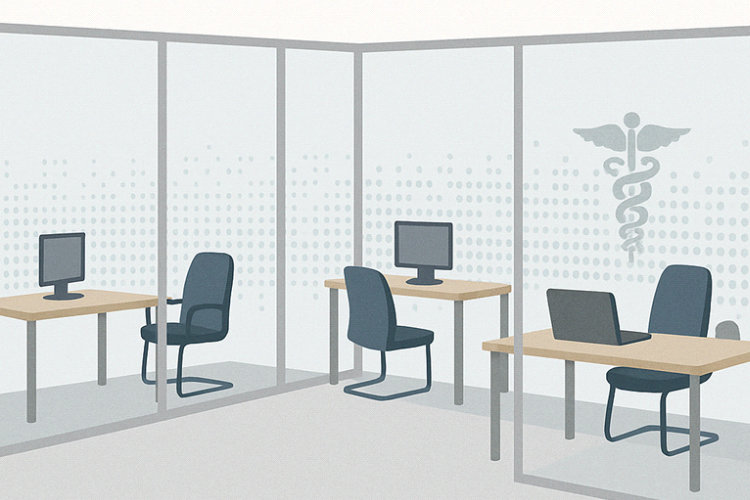
Building Materials: What Work Best for CDCs
| Element | Recommended Material | Reason |
|---|---|---|
| Flooring | Slip-resistant vitrified tiles | Durable, easy to sanitise |
| Wall finishes | FRP (Fibre-reinforced panels), PVC wall guards | Hygienic, protects from trolleys |
| Ceiling | Metal false ceiling (moisture-resistant) | Easy maintenance, accommodates HVAC |
| Counters | Solid surface (Corian, LG Hi-Macs) | Seamless, non-absorbent |
| External finishes | Pre-coated steel panels or textured acrylic | Weather-resistant, fast to install |
Thinking Beyond Construction: Operational Sustainability
Design decisions must support:
- Low energy usage: Solar integration, natural lighting, cross-ventilation.
- Rainwater harvesting is feasible.
- Low-maintenance finishes that reduce dependency on skilled maintenance staff.
Even something as simple as recessed LED cove lighting in waiting areas can reduce electricity costs while creating a more inviting environment.
The Shree Designs Lens: Architecture That Empowers
With over two decades of experience in healthcare architecture, Shree Designs brings a deeply human-centred approach to CDC development. Our work integrates:
- Compliance with NABH and public health mandates
- Community-tailored layouts
- Cost-efficient modularity
- Real-world feasibility—designed with operator and patient in mind
We view CDCs not as scaled-down hospitals, but as first-line healthcare infrastructure that can shift outcomes. A well-designed CDC can detect illness early, ease hospital load, and change how communities view health.
Conclusion: The Future of Diagnostics is Local
Community Diagnostic Centres are not a trend. They are an urgent need—and an opportunity to rebuild trust in the healthcare system.
With the right design principles, we can ensure these centres are more than functional units—they become anchors of preventive health in every neighbourhood.
Related Posts
Optimising Operations and Safety
What Is Thermal Bridging?
Thermal bridging might sound like a technical detail - but in healthcare buildings, it can directly…
Optimising Operations and Safety
Tech-Powered Healthcare Design
Limited space is one of the biggest challenges for hospitals, clinics, and wellness centres - but…
Optimising Operations and Safety
Rethinking Hospital Staff Areas
Hospital staff is the backbone of healthcare, and their well-being is essential for exceptional…
Optimising Operations and Safety
Fireproofing in Healthcare Design
Designing healthcare facilities isn't just about aesthetics—it's about ensuring the safety and…
Optimising Operations and Safety
The Role of Acoustics in Healthcare Facility Design
Sound matters in healthcare design. From optimizing acoustics to ensuring patient tranquillity, the…
Optimising Operations and Safety
Overcoming Unexpected Challenges in Hospital Design
The intricate world of hospital design is filled with unique challenges. From ensuring impeccable…
Optimising Operations and Safety
Navigational Design in Hospitals
Navigating a healthcare centre can be an overwhelming experience for patients and visitors alike.…
Optimising Operations and Safety
5 Patient-Friendly Designs for your Healthcare Facility
Healthcare organizations are shifting toward patient-centric design that gain not just patient…
Optimising Operations and Safety
5 Design Tips to Keep your Healthcare Facility Safe and Sterile
Stringent infection prevention and control measures in hospitals are rapidly becoming the norm in a…
Optimising Operations and Safety
Isolation Rooms – The Need of the Hour
Novel Coronavirus outbreak has left healthcare practitioners as well as the common man, concerned…
Optimising Operations and Safety
COVID-19 : Business Continuity Plan
Due to the outbreak of the unprecedented pandemic we at ShreeDesigns are conscious of the…
Optimising Operations and Safety
Social Distancing
Social distancing, a concept that has been around for ages, is one of the most vital measures…
